The first exhibition in our space ’The Ties that Bind” aims to surprise visitors to this city, by providing access to works by a dynamic range of international artists.
Organised in collaboration with GNYP Gallery Berlin, the exhibition presents works by the American Gina Beavers, Serge Attukwei Clottey (Ghana), Brian Harte (Ireland), Habib Farajabadi (Iran), Larissa bates (USA), Umut Yasat (Germany) and Otto Ford (UK/USA).
They have been arranged to provide a most interesting conversation across the floor space. The unnamed raw canvases of Habib Farajabadi, move from more representational works to richly abstract monochrome line drawings such as ‘Untitled Painting #45’. In this work created within his studio in Tehran, everything is paired down for the rich purity of the encounter. It is an entwined expression of the artist’s inner and outer life. As he says; My work is related to my own identity, not to any personal struggles.”
These images contrast with the colour-filled painterly works of Brian Harte, which accepts the convention of semi-abstract depth and field a little like Francis Bacon. These are large works but have intimacy in that many of the subjects are from Harte’s family. They project the human roots in domestic space and also distance. In his self portrait entitled ‘Auto portrait’ we encounter the artist set free in his essence, as the subject on a chair with a plume of blue energy rising from the turbulence of his being.
The dominant yellow background across Harte’s work entitled ‘Family’ links across the view of the gallery to both the yellow crates within Umut Yasat’s freestanding sculpture and then further on to the yellow remnants of cooking oil containers created by Serge Attukwei Clottey.
In Yasat’s sculpture, which represents a composite part of a larger single piece called ‘Der Stapel’ (The Stack) we see the seemingly bundled goods from an art studio and everyday life repackaged and completely transformed. This fairly impossible bundle secured with hidden tight bindings and an extensive web of plastic ties, is set on a porters trolley. It is a nervous system of objects…with an added sense of precariousness, balance and movement. The work invokes questions of the meaning of art, our material conventions, and perhaps the ‘bundles’ we all carry in our lives.
Following on to Clottey’s wall mounted work entitled ‘ Things fall apart’ The artist challenges us to re-conceive what are seen as waste objects and the fluidity of their meaning to our experience. Yellow gallon cooking oil containers which tend to litter the landscape of his home country of Ghana are sometimes recycled in their use by women, for their daily tasks of carrying water for their families in order to survive. Clottey’s work takes these containers, cuts them up and reassembles them with raw wire ties. In doing so, he explores and challenges the concept modern globalised society, of non-degradable petrochemical plastics and the consequences of growing drought and environmental change within his home country.
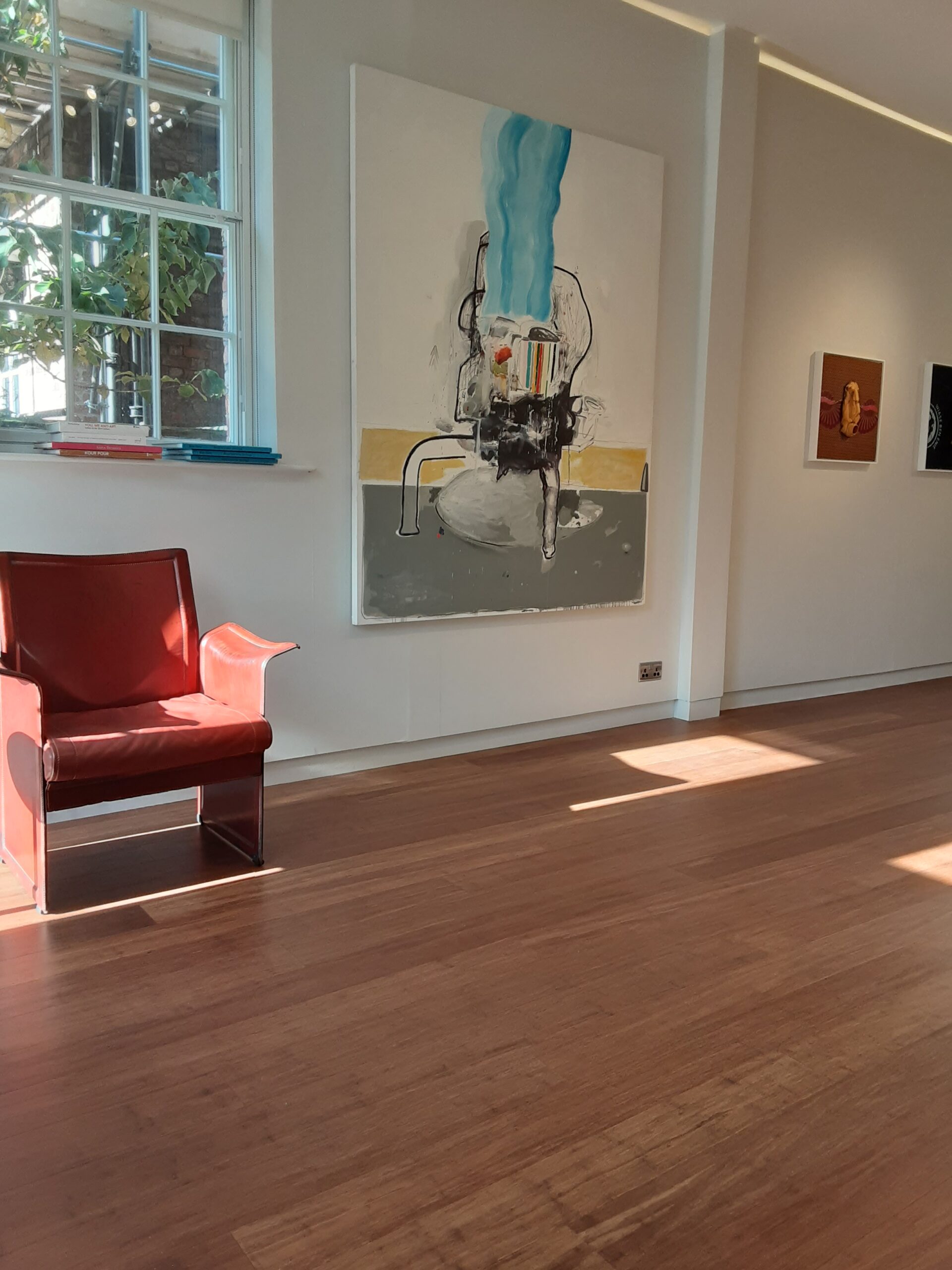
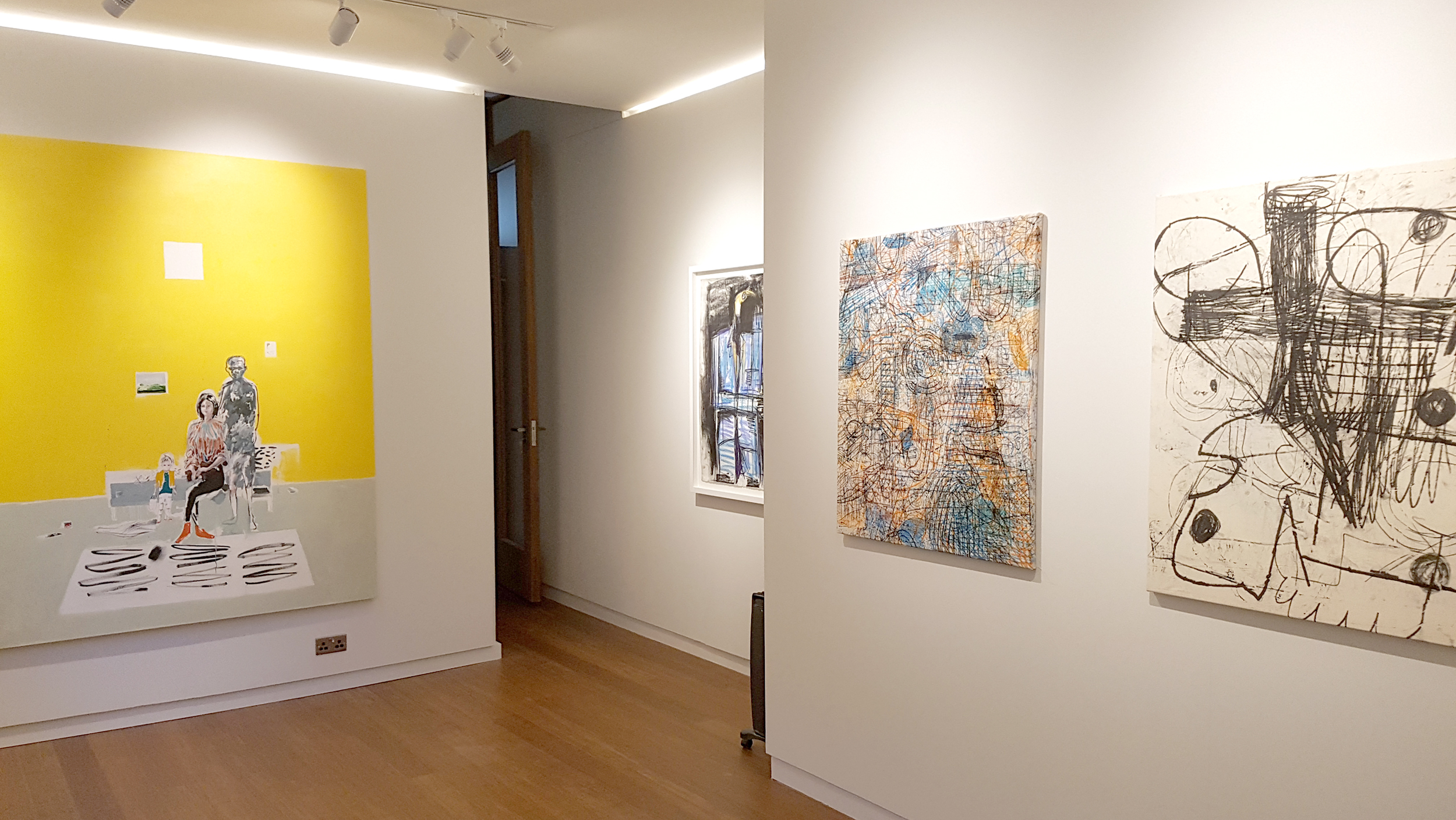
Across the room, in the works entitled VIII and XXII Clottey’s status as an international artist of African heritage is extended even further. Set against cotton batik backgrounds are highly charged tribal masks made from these self-same vegetable oil containers. It seems a powerful and imaginative transformation of the everyday into the mythological. These pieces seem to contain a knowing reference to the modern, embedded re-imagination of the primitive art explored in the West by artists such as Picasso and Braque, but one which is now returned back to them with interest.
The work by Gina Beavers entitled ‘Lets smile at Strangers’ is a good example of her three dimensional, sculptural paintings which reward the viewer who sees them in person rather than from a photograph. Gina’s works (which have been rewarded in 2019 with a solo show in MOMA New York) are layered and built up through acrylic paint and thickener. One of her aims is to “find a way to make paintings that couldn’t be so easily made by machine”.
Beavers’ themes tend focus on her questioning, subverting and transforming images usually associated with glamour and everyday mass culture. In this instance though, we are able to see the spiralling binding of five hands of different race, interconnected and entwined with each other.
Adjacent to Gina’s work is a carefully constructed artwork by Larissa Bates entitled ‘New Pro V Latin X Formula, For Latins it Shines’. Framed in fluid patterned walls, with reference to collage, her work’s highlighted with bands of gold paint allow us to switch from the modern to the idea of the sacred. In this, the work seems to present a new religious ‘marketing’ in the form of an icon depicting the individualist fulfilment of the self through the external illusion of beauty.
In the work of Otto Ford entitled ‘Perihelion Series, #14’ carries the seeming opposite of Gina Beavers objective, in that Ford seeks a flat representation of three dimensional depth, and a fusion between artist and computer in the production of these works. He seems interested in the ambiguity between human and computer mark-making. In doing so, he creates colour-filled abstract symphonies of movements, with a depth not just of the conscious imagination.
David Bingham
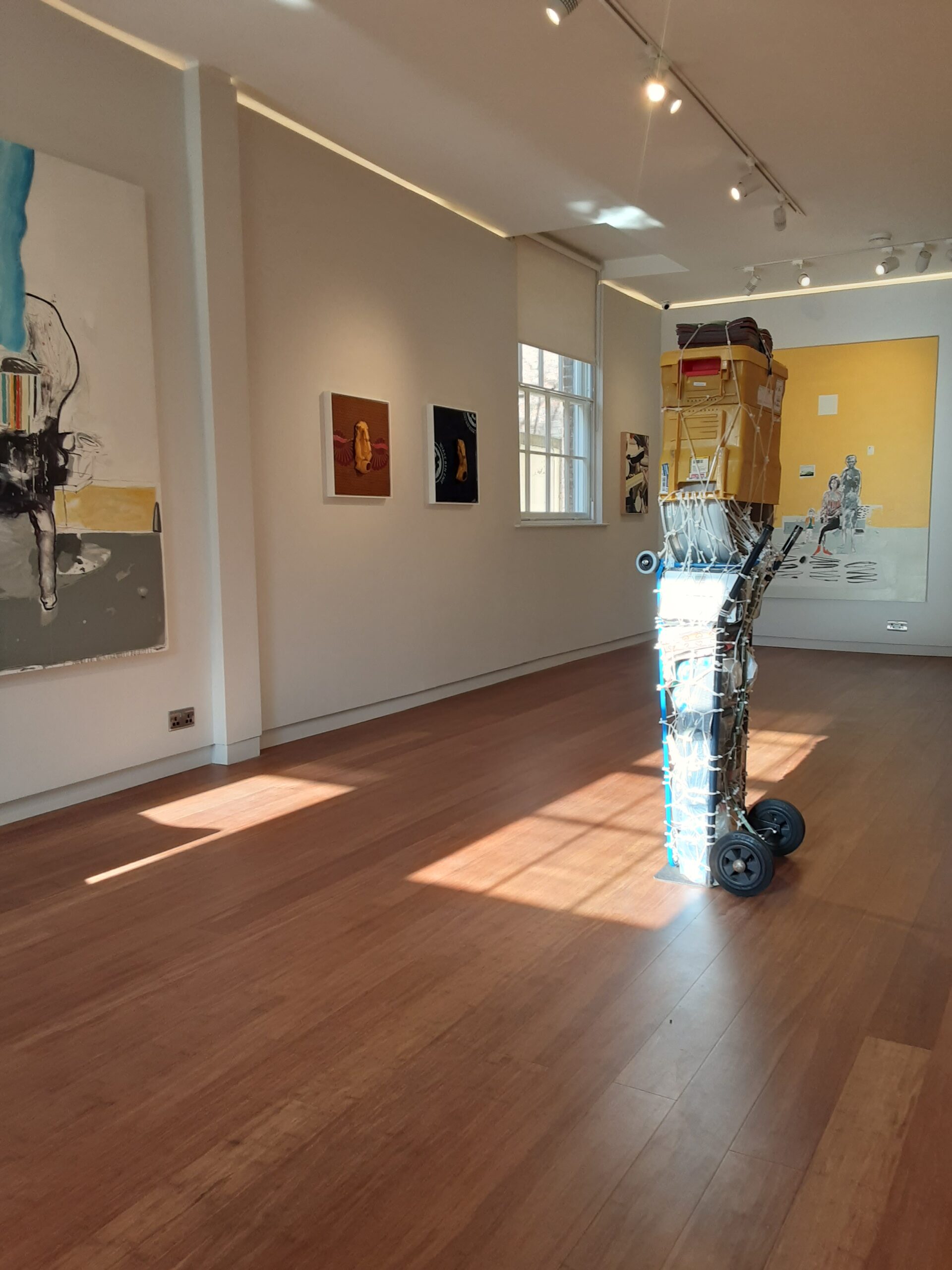
The Ties That Bind
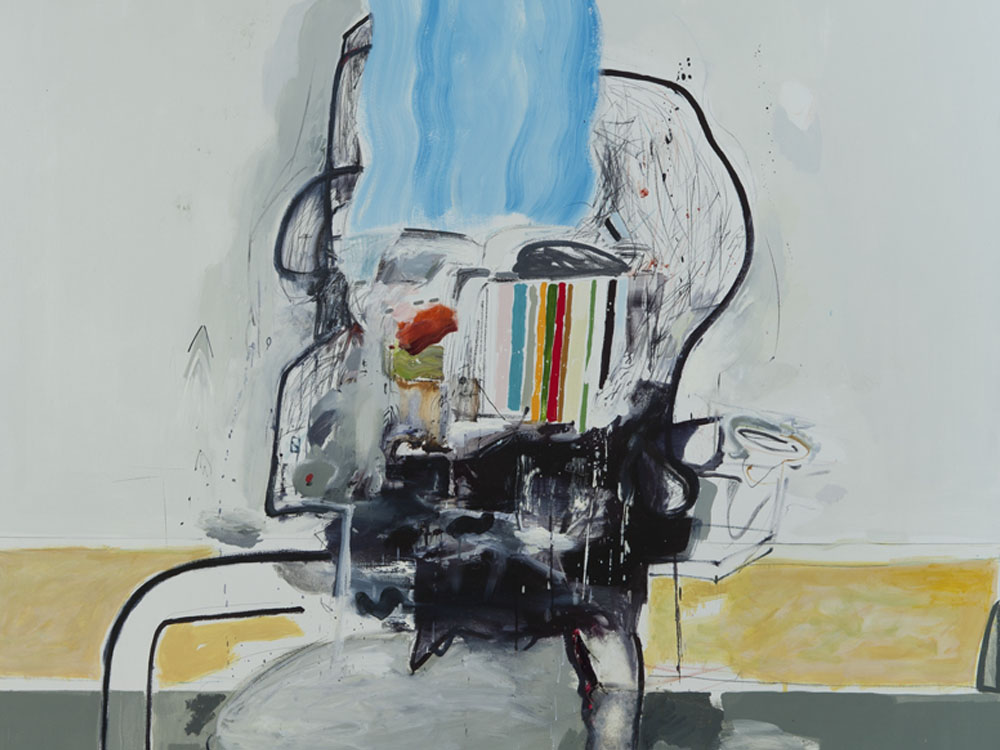
Brian Harte
Brian Harte (b. 1978) lives and works in County Tipperary, Ireland. He works mainly with large-scale canvases and is concerned with the investigation of composition and the relationship between abstractionism and figurative painting.
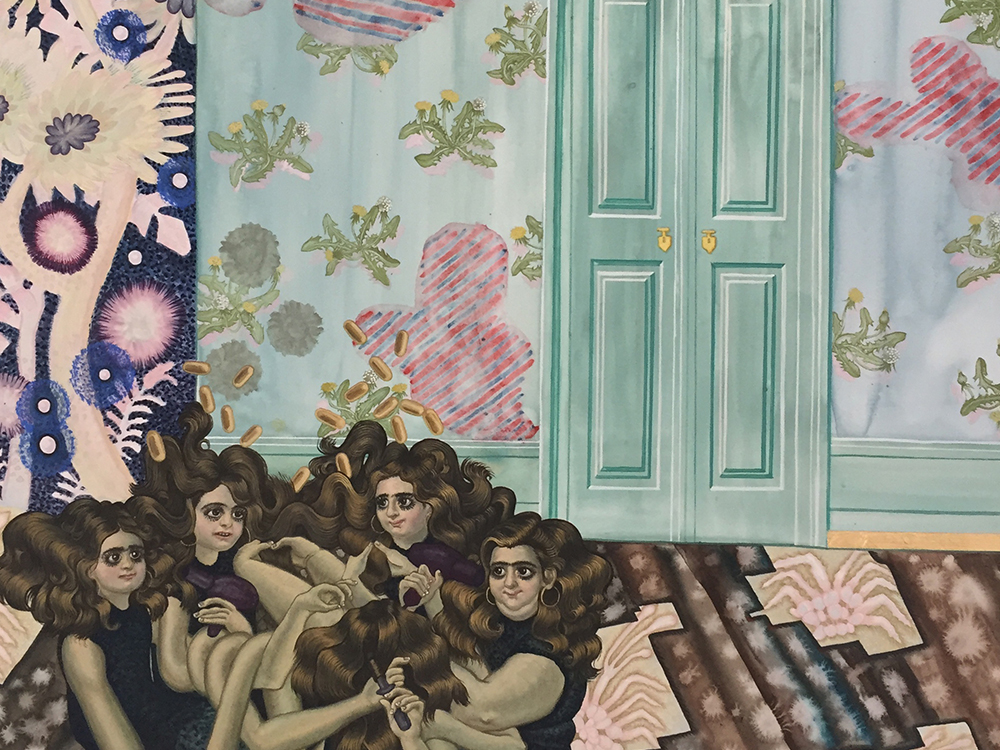
Larissa Bates
Larissa Bates (b. 1981 in Burlington, USA) lives and works in New York. She was raised between Vermont and Vara Blanca (Costa Rica) and graduated from Hampshire College in 2003 with a degree in Studio Art. Her Caribbean heritage is an essential part of her work.
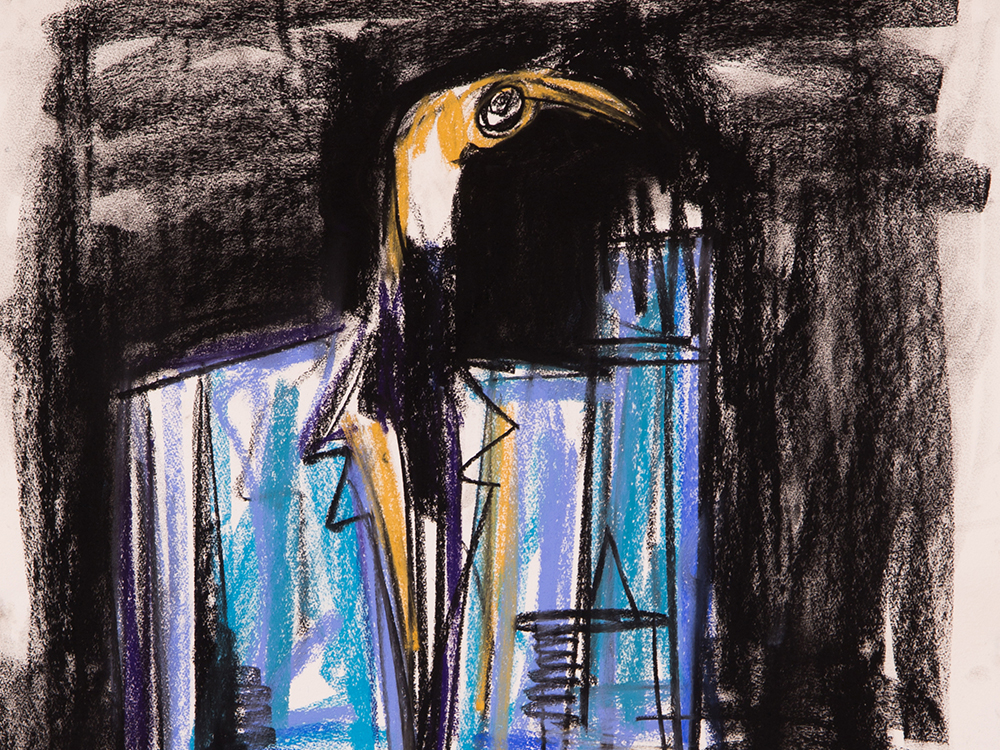
Serge Attukwei Clottey
Serge Attukwei Clottey (b. 1985) is known for his work that examines the powerful agency of everyday objects. Working across installation, performance, photography and sculpture, Clottey explores narratives of personal, family and collective histories often relating to trade and migration.
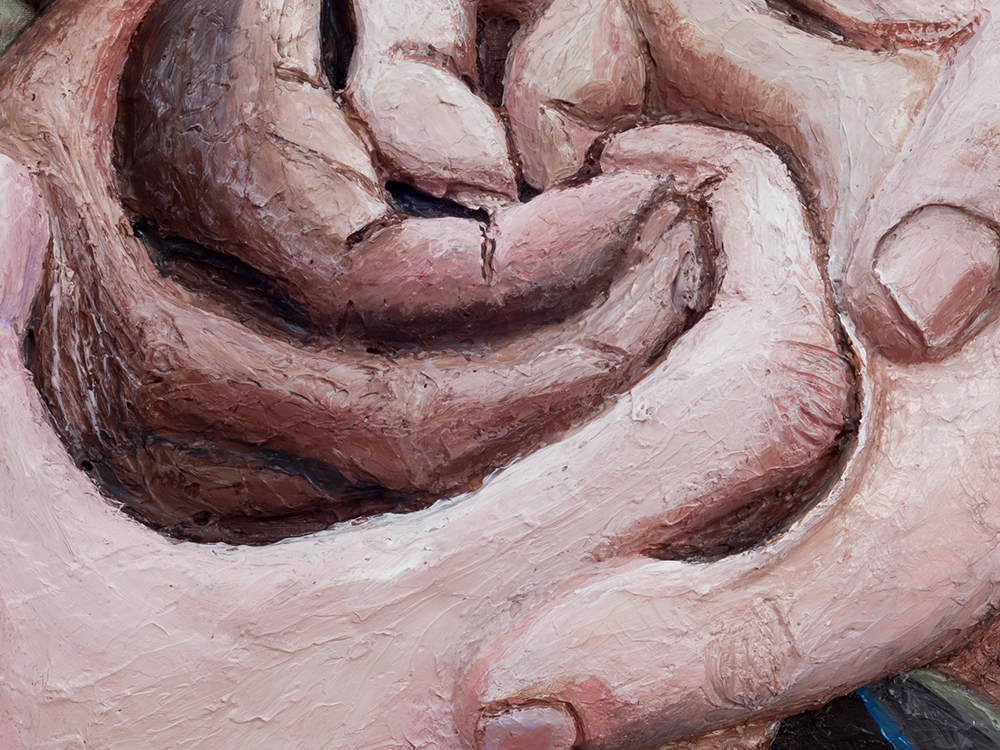
Gina Beavers
Gina Beavers (b. 1978) was born in Athens and lives and works in New York, where she creates paintings that reflect on contemporary society. Using photos from the internet in general and social media in particular as an inspirational source, Beavers creates her paintings, drawings and installations.
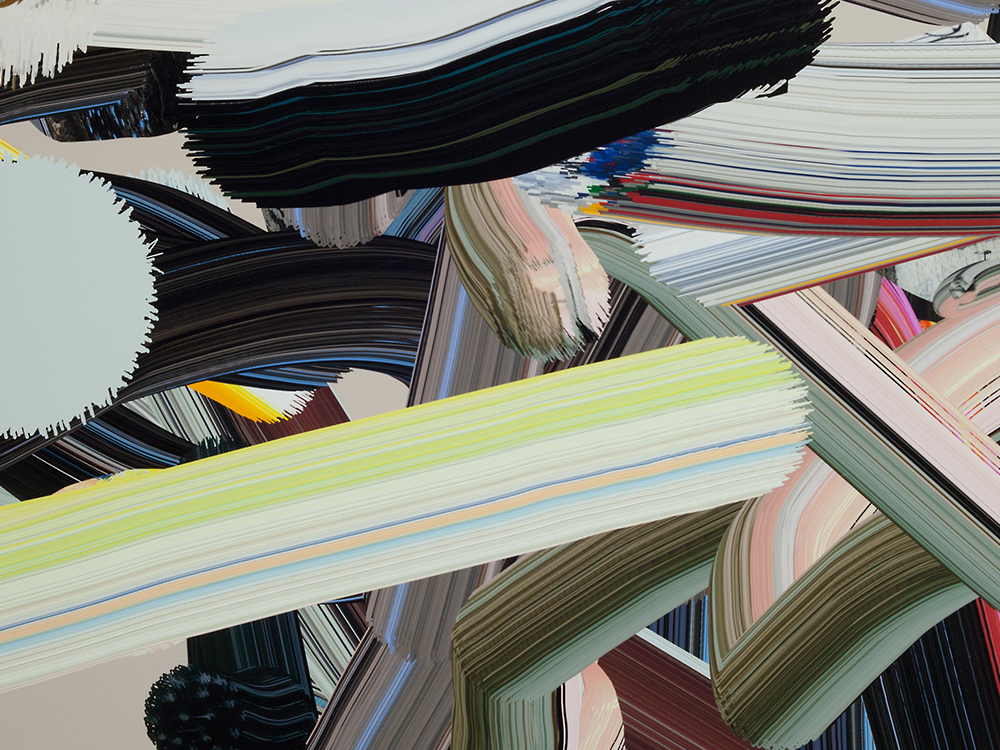
Otto Ford
Otto Ford (British, b.1978) works in London, UK. Received MA from Royal College of Arts in London in 2017. Otto Ford creates works that explore the re-processing of the digital as material paintings. Using found imagery Ford re animates the physical gesture of mark making.
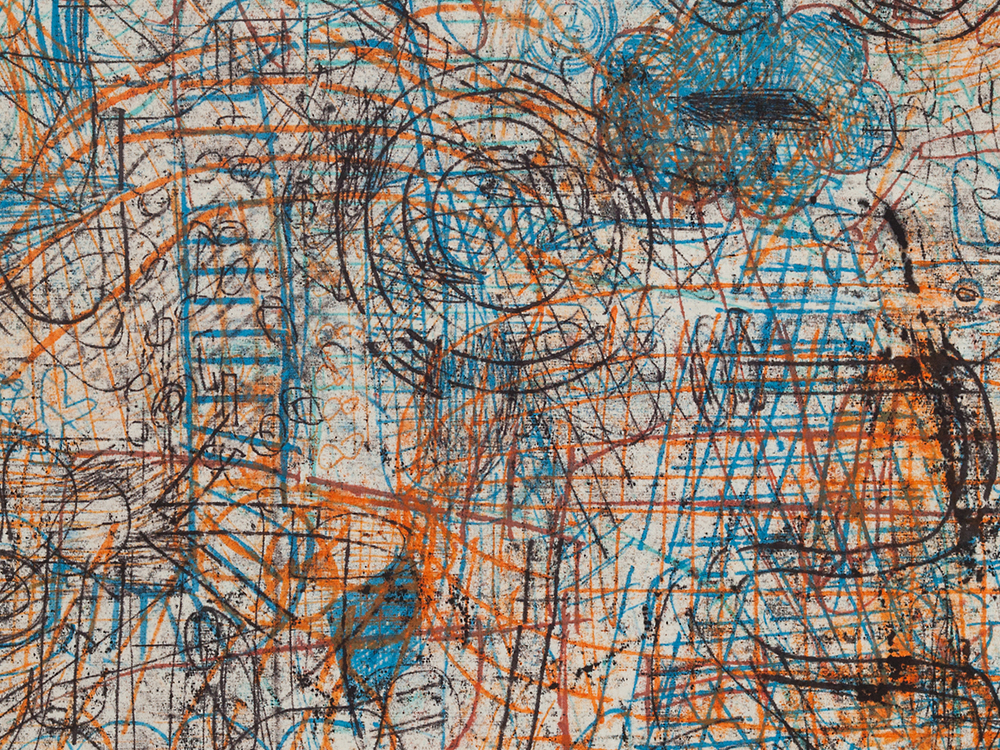
Habib Farajabadi
Habib Farajabadi (b. 1982) is Iranian and is based in the country’s capital of Tehran. As a self-trained artist, Farajabadi explores abstraction mainly through the traditional media of painting, drawing and sculpture. He paints exclusively with acrylic.
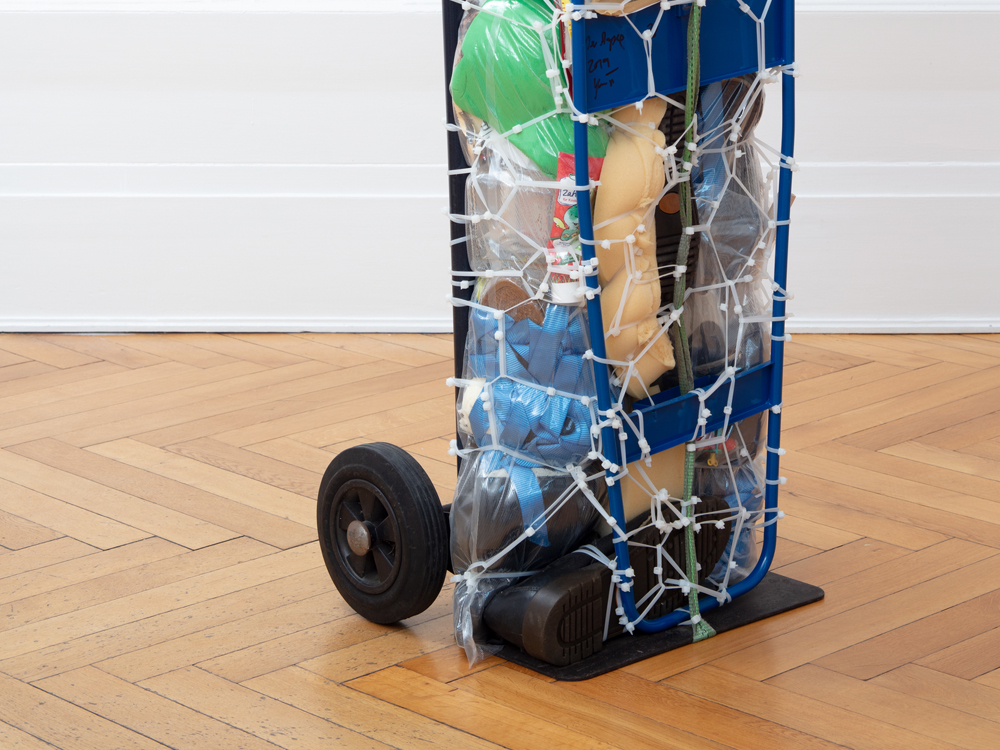
Umut Yasat
Umut Yasat (b. 1988) lives and works in Karlsruhe, Germany. Between 2009 and 2014 he studied at the Staatliche Akademie der Bildenden Künste in Karlsruhe with Gustav Kluge, Jonas Burgert and Marcel van Eeden. He started to work on ‘Der Stapel’ in 2014. At first this process encompassed tiding all of the artist’s previous works together but later it evolved into the agglomeration of not only works of art but several of the artist’s everyday objects – both meaningful and trivial.
